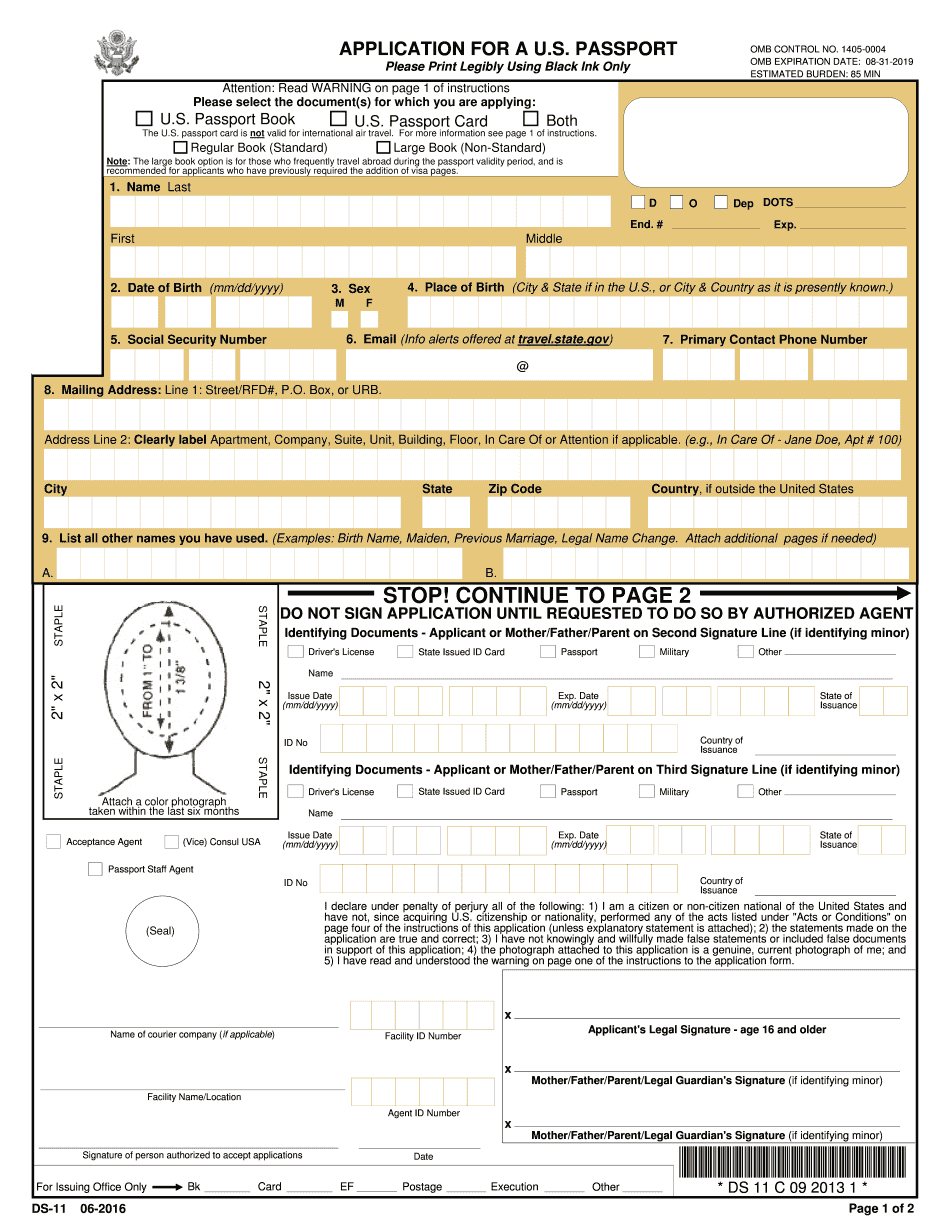Passport Paperwork Guide: Where to Get Started

Embarking on international travel or applying for a new passport can seem like a daunting task. The paperwork, forms, appointments, and fees can easily overwhelm anyone, especially those who are doing it for the first time. However, with the right guidance, the process can be navigated smoothly. Here's your comprehensive guide to getting started with your passport paperwork.
Understanding the Passport Types

Before diving into the paperwork, it’s crucial to understand the different types of passports available. Here’s a brief overview:
- Standard Adult Passport: This is for adults (16 years and over) and lasts for ten years.
- Child Passport: For children under 16, this passport is valid for five years.
- Passport Card: A less expensive, wallet-sized travel document for land and sea travel to countries next to the U.S. like Canada, Mexico, and Caribbean nations.
- Official and Diplomatic Passports: Issued to government officials for official travel.
Eligibility Requirements

Depending on your situation, the eligibility requirements might slightly vary. Here’s what you need to know:
- U.S. Citizens: Generally, you must be a U.S. citizen or a national to apply for a U.S. passport.
- First-Time Applicants: If you’ve never had a U.S. passport, you’ll need to apply in person at an Acceptance Facility or a passport agency.
- Minor Children: Both parents or legal guardians must consent or appear together when applying for a child’s passport.
Application Process

The application process for a passport involves several steps:
1. Complete the Application Form

First, download or fill out the appropriate application form:
- DS-11 for first-time applicants and those under 16 years.
- DS-82 for renewals of an adult passport that is less than 15 years old.
Do not sign the form until instructed by the acceptance agent.
2. Gather Required Documentation

Ensure you have all the necessary documents:
- Proof of U.S. Citizenship: This can be your birth certificate, consular report of birth abroad, or certificate of naturalization/citizenship.
- Proof of Identity: A driver’s license, previous U.S. passport, or government-issued photo ID.
- Photocopies of Documents: Photocopies of your proof of citizenship and identity.
- Passport Photo: A 2x2 inch color photo on a white background.
3. Find an Acceptance Facility

Locate the nearest Passport Acceptance Facility. These are typically post offices, libraries, or clerks of court.
📌 Note: Make sure to call ahead to check if an appointment is necessary or if walk-ins are allowed.
4. Payment of Fees

There are two types of fees:
- Application Fee: Payable to the U.S. Department of State for the processing of your passport.
- Execution Fee: A separate fee for having your application processed in person, payable to the acceptance facility.
You’ll also need to decide between:
- Regular Processing: Can take up to six weeks.
- Expedited Processing: An additional fee reduces processing time to 2-3 weeks.
5. Attend Your Appointment

On your appointment day:
- Fill out the application form if you haven’t already.
- Sign your application in front of the acceptance agent.
- Submit your documents, photo, and fees.
- Ask any questions if you’re unsure about anything.
Tracking Your Passport

Once your application is accepted, you’ll receive:
- A receipt with a tracking number.
- Information on how to check the status of your application online.
What to Do If You Need Your Passport Quickly

If you have travel plans in less than six weeks:
- Make an appointment at a Regional Passport Agency.
- Consider the use of passport expediting services.
There are also emergency circumstances where the process can be expedited for dire situations.
Travel Tips

Here are some tips to remember once you have your passport:
- Keep your passport in a safe place.
- Always carry a photocopy or a digital backup of your passport.
- Be aware of the validity requirements for your destination. Some countries require your passport to be valid for at least six months beyond your stay.
- Notify friends or family of your travel itinerary.
- Register with the Smart Traveler Enrollment Program (STEP).
The journey to obtaining or renewing a passport might seem intricate at first, but with this guide, you now have a clear path to follow. Each step is designed to ensure you meet all the necessary requirements, from understanding the different passport types to effectively tracking your application. Remember, traveling with the right documentation not only avoids inconveniences but also enhances your travel experience. By staying prepared, following through with the steps outlined, and being aware of your rights and responsibilities, your passport journey can be as enjoyable as the travels it enables.
Can I expedite my passport application?

+
Yes, you can expedite your passport application by paying an additional expediting fee, which speeds up the processing to about 2-3 weeks. For even quicker service in emergencies, visit a Regional Passport Agency or consider a third-party expediting service.
What if I need to travel within a week?

+
If you need to travel within a week, make an appointment at a Regional Passport Agency or consider an expediting service. There are also emergency situations where the passport can be expedited in even less time.
How long is a U.S. passport valid?

+
Adult passports are valid for 10 years from the date of issue, while child passports are valid for 5 years.



